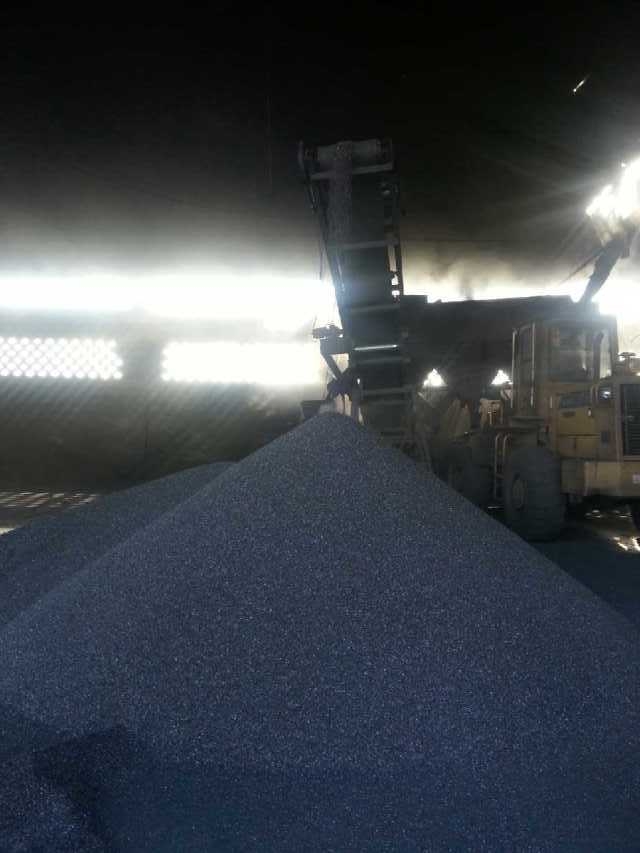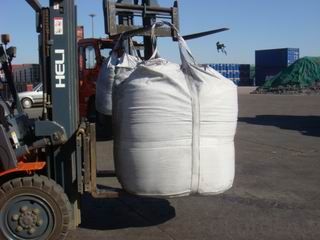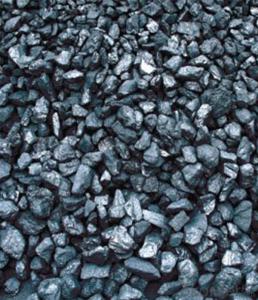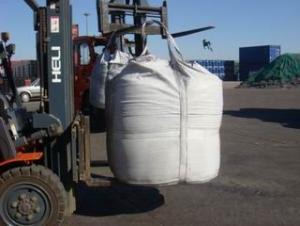FC 92% GAS Calcined Anthracite
- Loading Port:
- China Main Port
- Payment Terms:
- TT OR LC
- Min Order Qty:
- -
- Supply Capability:
- -
OKorder Service Pledge
OKorder Financial Service
You Might Also Like
Specifications
Calcined Anthracite
Fixed carbon: 90%-95%
S: 0.5% max
Size: 0-3. 3-5.3-15 or as request
Calcined Anthracite is produced using the best Anthracite-Taixi Anthracite with low S and P, It is widely used in steel making and casting, Chemical and some other fields.
General Specification of Calcined Anthracite:
PARAMETER UNIT GUARANTEE VALUE | |||||
F.C.% | 95MIN | 94MIN | 93MIN | 92MIN | 90MIN |
ASH % | 4MAX | 5MAX | 6MAX | 7MAX | 8MAX |
V.M.% | 1 MAX | 1MAX | 1.5MAX | 1.5MAX | 1.5MAX |
SULFUR % | 0.5MAX | 0.5MAX | 0.5MAX | 0.5MAX | 0.5MAX |
MOISTURE % | 0.5MAX | 0.5MAX | 0.5MAX | 0.5MAX | 0.5MAX |
Size can be adjusted based on buyer's request.
Pictures of Calcined Anthracite:




We can supply below furnace charges, please feel free to contact us if you areinterested in any of any of them:
Coke (Metallurgical, foundry, gas)
Calcined Anthracite with fixed carbon from 90% to 95%
- Q:How does carbon affect the pH of water bodies?
- Carbon can have a significant impact on the pH of water bodies. When carbon dioxide (CO2) from the atmosphere dissolves in water, it forms carbonic acid (H2CO3). This process is known as carbonation and occurs naturally in water bodies. Carbonic acid is a weak acid and it plays a crucial role in buffering the pH of water bodies. The presence of carbonic acid in water can lower the pH, making it more acidic. This is because carbonic acid dissociates into hydrogen ions (H+) and bicarbonate ions (HCO3-). The higher the concentration of hydrogen ions, the lower the pH of the water. Therefore, carbonic acid contributes to the acidity of water bodies. Additionally, carbonic acid can undergo further dissociation to form carbonate ions (CO32-). These carbonate ions can react with hydrogen ions, effectively reducing the concentration of hydrogen ions and increasing the pH of the water. This process is called carbonation and it acts as a buffer, helping to stabilize the pH of the water. Human activities, such as burning fossil fuels and deforestation, release excessive amounts of carbon dioxide into the atmosphere. This leads to an increase in the concentration of carbonic acid in water bodies, which in turn lowers the pH. This phenomenon is known as ocean acidification and it can have detrimental effects on marine life. Decreased pH caused by excess carbon can harm aquatic organisms, especially those with calcium carbonate shells, such as corals, mollusks, and some plankton species. The more acidic water dissolves their shells, making them more vulnerable to predation and reducing their ability to build and maintain their protective structures. In conclusion, carbon can significantly affect the pH of water bodies through the formation of carbonic acid. While carbonic acid contributes to the acidity of water, it also acts as a buffer, helping to stabilize the pH. However, excessive carbon dioxide emissions from human activities can lead to ocean acidification, impacting marine life and the overall health of water ecosystems.
- Q:How are carbon nanotubes used in various industries?
- Carbon nanotubes are used in various industries for their exceptional properties. In electronics, they are utilized for creating smaller and faster transistors and memory devices. In materials science, they enhance the strength and conductivity of composites used in aerospace and automotive sectors. They also find applications in energy storage, where they improve the efficiency of batteries and supercapacitors. Additionally, carbon nanotubes are employed in medicine for drug delivery systems and as biosensors for detecting diseases. Overall, their versatility makes them valuable in multiple industries for enhancing performance and enabling innovative technologies.
- Q:How does carbon impact the fertility of soil?
- Carbon plays a crucial role in the fertility of soil as it is the foundation of organic matter, which is vital for soil health and productivity. When carbon-rich organic matter, such as decaying plant and animal residues, is added to the soil, it helps improve its structure, nutrient-holding capacity, and water retention. This, in turn, enhances the soil's ability to support plant growth and sustain microbial activity. Organic matter serves as a source of carbon for soil microorganisms, fungi, and bacteria, which decompose it and release nutrients for plants. This decomposition process, known as mineralization, releases essential macronutrients (nitrogen, phosphorus, and potassium) and micronutrients into the soil, making them available for plant uptake. Additionally, carbon in organic matter helps bind soil particles together, improving soil structure and preventing erosion. Moreover, carbon improves the soil's water-holding capacity, reducing the risk of drought stress for plants. It acts as a sponge, absorbing and retaining moisture, which helps to sustain plant growth during dry periods. Carbon also promotes the development of a healthy and diverse soil microbial community, including beneficial bacteria and fungi. These microorganisms enhance nutrient cycling, disease suppression, and plant nutrient uptake, further contributing to soil fertility. However, excessive carbon inputs, such as from excessive organic matter addition or improper land management practices, can have negative effects on soil fertility. An imbalance in carbon availability can lead to nitrogen immobilization, where soil microorganisms consume nitrogen for their own growth, depriving plants of this essential nutrient. Additionally, high carbon content can create anaerobic conditions, reducing the availability of oxygen for plant roots and beneficial soil organisms. In summary, carbon is essential for maintaining soil fertility as it improves soil structure, nutrient availability, water retention, and microbial activity. However, it is crucial to maintain a balanced carbon-to-nitrogen ratio and adopt sustainable land management practices to ensure the optimal fertility of soil.
- Q:How does carbon affect the electrical conductivity of materials?
- Carbon can significantly affect the electrical conductivity of materials due to its unique electronic properties. Carbon atoms, when bonded together in a specific arrangement, can form different allotropes such as graphite, diamond, and fullerenes, each with distinct electrical conductive properties. Graphite, for example, is composed of layers of carbon atoms arranged in a hexagonal lattice structure. Within each layer, carbon atoms form strong covalent bonds, resulting in a stable structure. However, between the layers, weak van der Waals forces exist, allowing for easy movement of electrons in the plane of the layers. This delocalization of electrons in graphite leads to its high electrical conductivity, as the free electrons can move freely and carry electrical charges. On the other hand, diamond, another allotrope of carbon, has a three-dimensional covalent network structure. In this structure, each carbon atom forms four strong covalent bonds with its neighboring atoms, resulting in a highly rigid and stable lattice. The absence of free electrons in diamond restricts the movement of electrical charges, making it an insulator. Fullerenes, which are spherical carbon molecules, can have varying electrical conductive properties depending on their structure. Some fullerenes can behave as semiconductors, meaning their electrical conductivity can be manipulated by introducing impurities or applying external stimuli. In addition to these allotropes, carbon can also be used as a dopant in certain materials to enhance their electrical conductivity. For instance, doping silicon with small amounts of carbon can improve its electrical conductivity, resulting in materials suitable for electronic devices. Overall, carbon's influence on electrical conductivity is highly dependent on its structure and arrangement within a material. Understanding the different forms and properties of carbon can help engineers and scientists design materials with desired electrical conductive characteristics for various applications.
- Q:What are the advantages of carbon-based fertilizers?
- Carbon-based fertilizers have several advantages. Firstly, they provide a source of organic matter that improves soil structure and enhances water holding capacity. This can lead to better nutrient availability and healthier plant growth. Additionally, carbon-based fertilizers stimulate microbial activity in the soil, promoting nutrient cycling and improving overall soil health. They also tend to have a slower release of nutrients, ensuring a steady supply for plants over time. Moreover, carbon-based fertilizers are environmentally friendly as they reduce the reliance on synthetic fertilizers, minimizing the risk of water pollution and supporting sustainable agricultural practices.
- Q:What is the role of carbon 60 in industry? Can it be interchanged with the chemical properties of carbon? What is the chemical structure of carbon 60?
- Used to strengthen metals; used as a new catalyst for storage of gases
- Q:What is the carbon footprint of different activities?
- The carbon footprint of different activities refers to the amount of greenhouse gas emissions, particularly carbon dioxide (CO2), that are released into the atmosphere as a result of carrying out those activities. It is a measure of the impact that these activities have on climate change. Various activities contribute to our carbon footprint, including transportation, energy use, food production, and waste management. The carbon footprint of each activity can vary significantly depending on factors such as the type of energy sources used, the efficiency of technologies involved, and individual choices. Transportation is a major contributor to carbon emissions, with cars, planes, and ships being the primary sources. The use of fossil fuels in these modes of transportation releases CO2 into the atmosphere. The type of vehicle, fuel efficiency, and distance traveled all play a role in determining the carbon footprint of transportation. Energy use is another significant contributor, particularly in the form of electricity generation. Burning fossil fuels like coal and natural gas to produce electricity releases CO2. However, renewable energy sources like wind, solar, and hydroelectric power have a lower carbon footprint as they do not emit greenhouse gases during operation. Food production is often overlooked but has a substantial carbon footprint. The agricultural practices involved in growing, processing, packaging, and transporting food contribute to emissions. Additionally, livestock farming, particularly beef and lamb, produces significant amounts of methane, a potent greenhouse gas. Waste management also contributes to carbon emissions, primarily through the decomposition of organic waste in landfills. As organic waste breaks down, it produces methane. Proper waste management techniques, such as composting and anaerobic digestion, can help reduce these emissions. It is important to note that the carbon footprint of activities can be reduced through various measures. Adopting energy-efficient technologies, using public transportation or carpooling, choosing renewable energy sources, eating a more sustainable diet, and practicing proper waste management are all ways to minimize our carbon footprint. Understanding the carbon footprint of different activities allows individuals, businesses, and governments to make informed decisions and take necessary actions to mitigate climate change. By reducing our carbon footprint, we can contribute to a more sustainable and environmentally-friendly future.
- Q:How is carbon used in the production of batteries?
- Carbon is used in the production of batteries as it serves as a key component in the construction of electrodes. It is typically used in various forms such as graphite or carbon black, which provide a conductive surface for the flow of electrons during the charging and discharging process. The carbon-based electrodes help enhance the battery's overall performance and increase its energy storage capacity.
- Q:How does carbon affect the properties of steel?
- Carbon affects the properties of steel by increasing its hardness, strength, and overall durability. The presence of carbon allows for the formation of iron carbides, which strengthen the steel's crystal lattice structure. The higher the carbon content, the harder and stronger the steel becomes. However, excessive carbon can make the steel brittle, reducing its impact resistance.
1. Manufacturer Overview |
|
|---|---|
| Location | |
| Year Established | |
| Annual Output Value | |
| Main Markets | |
| Company Certifications | |
2. Manufacturer Certificates |
|
|---|---|
| a) Certification Name | |
| Range | |
| Reference | |
| Validity Period | |
3. Manufacturer Capability |
|
|---|---|
| a)Trade Capacity | |
| Nearest Port | |
| Export Percentage | |
| No.of Employees in Trade Department | |
| Language Spoken: | |
| b)Factory Information | |
| Factory Size: | |
| No. of Production Lines | |
| Contract Manufacturing | |
| Product Price Range | |
Send your message to us
FC 92% GAS Calcined Anthracite
- Loading Port:
- China Main Port
- Payment Terms:
- TT OR LC
- Min Order Qty:
- -
- Supply Capability:
- -
OKorder Service Pledge
OKorder Financial Service
Similar products
New products
Hot products





























